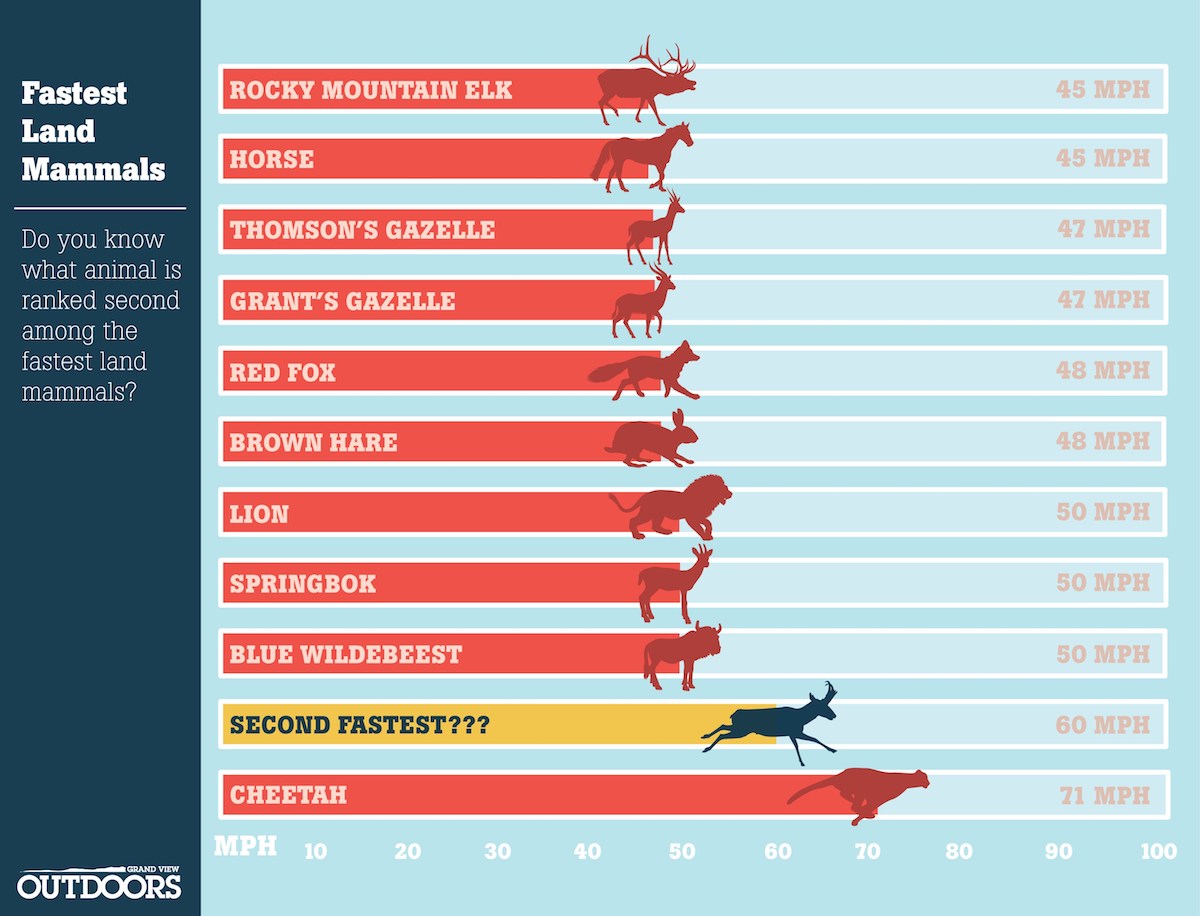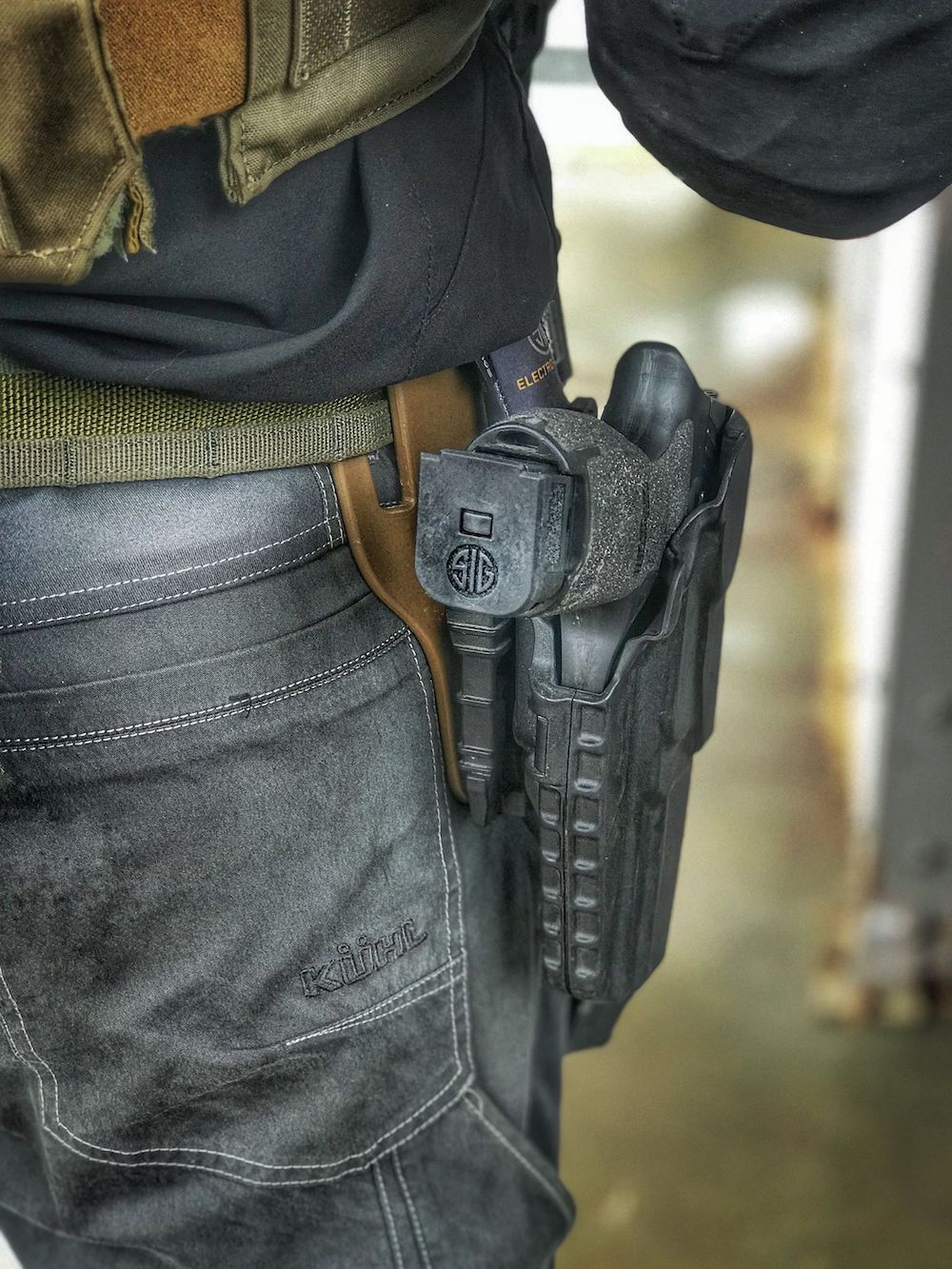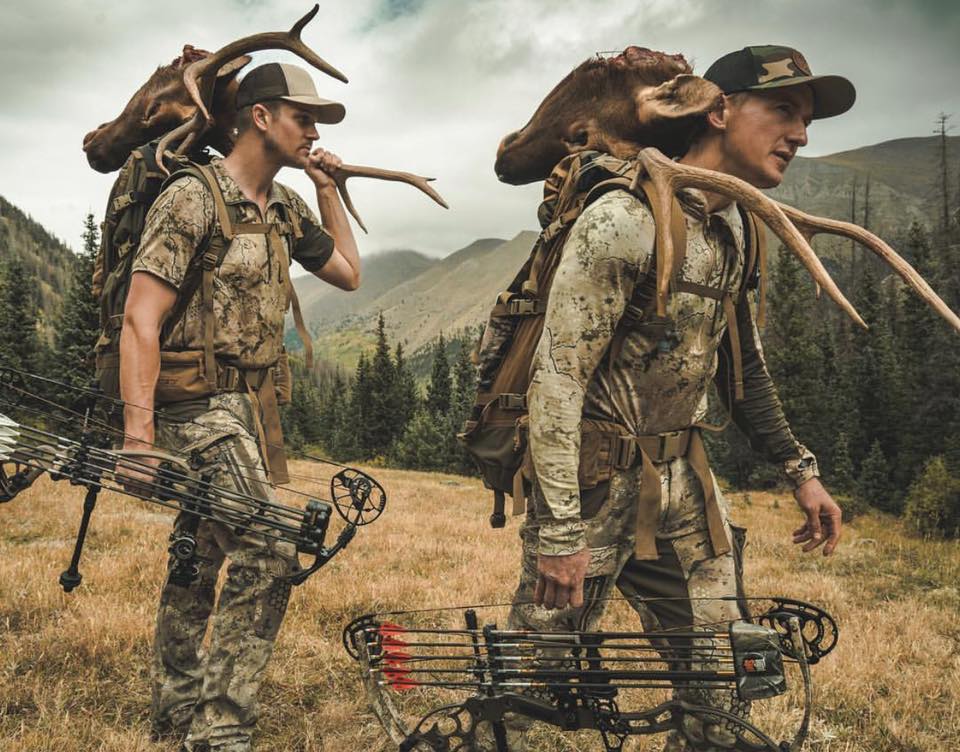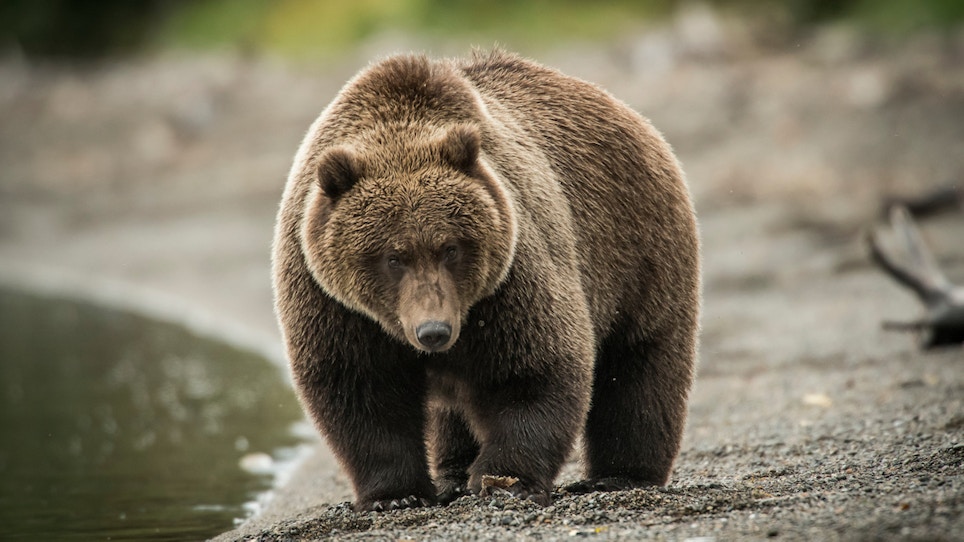A Wyoming hunting guide recently lost his life in the Teton Wilderness and, by all accounts, he had no time to retrieve his gun or draw his holstered bear spray before he was hit by a grizzly charging downhill. As Brad Hovinga of the Wyoming Game and Fish Department’s Jackson Region told Jackson Hole News and Guide, “(The grizzly) just came on a full run. There was no hesitation.”
By now anyone who has followed this story knows what happened, but how it went down lends itself to larger questions about the physical and behavioral characteristics of, not only grizzly bears, but also humans and our ability to respond to an imminent threat.
If you're not familiar with this recent Wyoming tragedy, here's the Cliff Note's version:

Mark Uptain, who was attacked and killed by a Wyoming grizzly, was husband to Sarah and the father of five children. He worked as a guide for Martin Outfitters and also owned Blue Sky Services and Restoration in Jackson Hole. Photo: The Uptain Family
The Guide: Hunting guide Mark Uptain was husband to Sarah and the father of five children, worked as a guide for Martin Outfitters and also owned Blue Sky Services and Restoration in Jackson Hole. The bear attack happened a day after a successful elk hunt Uptain guided, when he and his client returned to retrieve the elk meat and antlers. At the time the grizzly charged, the guide had already quartered the elk and was removing its head.
The Grizzly: Wildlife officials do not believe the approximately 250-pound bear was returning to the site to reclaim the elk carcass. She was around 10 years old, in good shape with plenty of fat. Also, there was a 1 ½-year-old bear cub near the sow grizzly before the attack, but he wasn’t near the hunters nor was he threatened prior to the grizzly's charge.
The Hunter/Client: The grizzly first hit Uptain before adverting her attention to Corey Chubon, the out-of-state hunting client from Florida. But the grizzly retreated after Uptain distracted her, and attacked the hunting guide once again. Chubon went for his guide’s Glock, which had been left a few yards uphill with other gear. But the hunter could not get the Glock to fire, so he tossed the pistol to his guide. The pistol didn’t make it, and the client fled for help.
At this point, try not to get distracted by the Florida hunter’s actions and the Glock that would not fire. We'll unpack that later in the story. For now, we dig into the speed and power of the grizzly and the efforts made by the hunting guide to survive.
The Grizzly’s Speed and Distance
The exact distance the grizzly bear covered from the moment she was spotted by the hunters until she hit the hunting guide running full-bore, charging downhill, has not been reported. We know she appeared out of a nearby clearing.
But for the sake of a baseline, let's say the distance from the clearing to the elk carcass where the hunting guide worked was 50 yards. We also know based on the typical speed of grizzlies at short distances, the sow could have covered 50 yards in 3 seconds, running at a rate of approximately 40 mph. Still, after reading the account of the attack, the distance the grizzly covered could have easily been less than 50 yards, though it's less likely that it was more than that distance.
So we can safely say, in such a scenario, a hunter working over an elk carcass would have less than 3 seconds to react before a charging grizzly makes its initial contact. For context, 40 mph is faster than a standard race horse at short distances, according to the U.S. Fish and Wildlife Service. However, the grizzly's 40-mph speed isn’t exceptional when comparing its speed to the speed of other wild animals. A pronghorn is the second fastest land mammal clocking in at 60 mph, while an elk, red fox and gazelle all top out in the 40 mph to 50 mph range.
What is exceptional is the grizzly bear’s ability to reach this speed quickly, when covering a short distance, given its size and dexterity. Their speed is deceptive.

A pronghorn is the second fastest land mammal clocking in at 60 mph, while an elk, red fox and gazelle all top out in the 40 mph to 50 mph range.
The Time It Takes to Draw and Fire
When considering the fatal bear attack in the Teton Wilderness, the reports show the victim was carrying bear spray in a hip-slung holster, while his Glock was left alongside other gear a few yards uphill from where the guide worked. If given only 3 seconds from the time Uptain was aware of the bear’s charge to when he was hit, it’s safe to assume he had no chance of getting to his gun.
We also know Uptain was unable to draw and fire the holstered bear spray before the initial hit. He did discharge the spray, dousing the grizzly, but official reports have confirmed the spray was deployed sometime after the first attack.

How long would it take a hunter in Uptain’s situation to draw and fire on a charging grizzly, running downhill at an estimated 40 mph? Photo: Sig Sauer
How long would it take a hunter in Uptain’s situation to draw and fire the bear spray? Or, had Uptain had his Glock holstered at his side instead of the bear spray, could he have gotten off a shot before the initial hit?
Remember we are working with 3 seconds as our baseline. We also know at some point the sow's bear cub became part of the attack, but for purposes of processing bear speed and human reaction times, the bear cub's role in the attack is not relevant.
A fast-draw, competitive shooter can draw and fire a single-action revolver in less than one quarter of a second. Ernie Hill, the current world record holder in the World Fast Draw Association’s traditional style competition, can draw and fire a single shot in .219 seconds. So world-record-holder Hill would have plenty of time to draw and fire on a charging grizzly, with seconds left for overcoming mistakes or inaccuracies caused by adrenaline or terror.
However, how would someone else fair, maybe a gun owner with advanced or intermediate skills who is highly capable but certainly nowhere near at the skill level of a competitive, fast-draw shooter and world record holder? After taking a look at a message board on DefensiveCarry.com, we learn the time it takes to draw and fire a holstered firearm goes way up for non-competitive shooters, as one might imagine. Those on the message boards are gun owners, mostly avids, who have taken concealed-carry classes and intermediate-level firearms courses. The website's readers handle guns regularly and, many who posted to a thread centered on draw times, cited that 1.5 seconds is a good draw time to aspire to.
So, at a 1.5-second draw time based on a 3-second reactionary time before the bear hits, Uptain would have theoretically been able to draw and fire his holstered bear spray, hitting the bear before the bear hit him. This would be true even if he was half as fast as the avid handgun users who frequent the DefensiveCarry.com message boards. This also indicates that, if Uptain had his Glock holstered instead of the bear spray, he could have gotten off a shot at the oncoming bear.
Since, in this case, we know the hunting guide did not have time to spray the holstered bear spray before the initial bear attack, you have to wonder if the bear appeared from the clearing, charging ahead, much closer to the hunters than the 50 yards we've used as a baseline? And, if so — say the bear charged from 25 yards giving its victim only 1.5 seconds to react — then it’s likely Uptain had no chance of firing his bear spray or, had he been armed with his Glock, no chance of getting a shot off.
Situation Awareness and Time
What's most surprising in this entire analysis is how futile the situation was from the start, given the limited amount of time Uptain or any hunter in a similar situation would have to react. Regardless of whether a victim is a super quick-draw or not, it probably wouldn't have mattered if time to react was 1.5 seconds or 3 seconds. Nether would have been enough.
This is due to the reactionary gap, which essentially cuts into the time it takes a person to react when physically threatened. So it’s not accurate to estimate reaction time simply based on the time it takes to perform the defensive action itself, in this case drawing and firing bear spray or a handgun. Firearms instructors often refer to this gap as the "21-Foot Rule." According to Police Magazine, a trade magazine for law enforcement officers, the Rule was developed by Lt. John Tueller, a firearms instructor with the Salt Lake City Police Department.
Here's how the 21-Foot Rule was explained by Ron Martinelli, Ph.D., a nationally renowned forensic criminologist and contributor to Police Magazine.
"Back in 1983, Tueller set up a drill where he placed a "suspect" armed with an edged weapon 20 or so feet away from an officer with a holstered sidearm. He then directed the armed suspect to run toward the officer in attack mode. The training objective was to determine whether the officer could draw and accurately fire upon the assailant before the suspect stabbed him.
"After repeating the drill numerous times, Tueller —who is now retired — wrote an article saying it was entirely possible for a suspect armed with an edged weapon to fatally engage an officer armed with a handgun within a distance of 21 feet. The so-called "21-Foot Rule" was born and soon spread throughout the law enforcement community."
The drill demonstrates the reactionary gap. An officer who is charged by an armed suspect would technically have the time to do the physical work of drawing and firing a handgun to thwart the aggressor's actions. However, in humans, sudden action is typically faster than a defensive response. So when an officer experiences a threat, it takes on average .58 seconds to experience the threat and determine if it is real.
Further, according to the brain’s reaction to a perceived threat as detailed by Martinelli, the following happens:
"When a human is threatened, the brain automatically infuses the body with adrenalin (stimulant), endorphins (pain blockers) and dopamine (euphoric pain blocker). The body uses these chemicals to help us survive an encounter by making us faster, stronger, and more pain tolerant. However, these same chemicals can also significantly diminish our performance under intense stress by causing such problems as perceptional narrowing (tunnel vision), loss of near vision and auditory occlusion (reduced hearing) or exclusion (loss of hearing). This ultimately negatively affects our chances of surviving a violent encounter.
"Under the intense stress normally associated with deadly force threat scenarios and while under the influence of survival chemicals, the body's basal metabolic rate, measured by heart rate, blood pressure and respiration climbs significantly in milliseconds. This dynamic can cause further psychophysiological impairments such as vasoconstriction, which can impair weapon manipulation, cognitive processing and stress memory recall following an encounter."

The way the human brain responds to physically-threatening situations may explain why the Florida hunter, a survivor of the Wyoming grizzly attack, was unable to fire his guide’s handgun at the attacking bear. Photo: Pnuma Outdoors
If we shift analysis away from the hunting guide charged by the grizzly and put our focus on the hunting client, that last line in the excerpt is critical. It's for these reasons that the Florida hunter, a survivor of the Wyoming tragedy, may have been unable to fire his guide's handgun at the attacking bear. His ability to manipulate the Glock was impaired in ways that are otherwise inexplicable.
Had the hunter experienced vasoconstriction as cited in Martinelli's article excerpt, which is a sudden increase in blood pressure, the hunter would have been partially debilitated by stroke-like symptoms that may have included numbness or weakness of the face, arm or leg, sudden confusion, trouble seeing in one or both eyes and possibly a loss of balance and coordination.
For some, even those who consider themselves seasoned hunters and outdoorsmen — which by all accounts Uptain was — it's hard to imagine being armed and prepared in the wilderness only to lose your life to a charging wild animal. Yet these incidents, while incredibly rare, tend to happen quickly — so quickly it's difficult to immediately comprehend such circumstances. It's also easy to second-guess, one-up or condemn the failed responses of those who have experienced a life-threatening or fatal incident. Yet, there are so many factors at play when dealing with an unpredictable wilderness where life-defining moments go down in a matter of seconds.
Nature is an often romanticized and reinvented ideal for a largely metropolitan America. But the word "wilderness" has “wild” at its root for a reason. As soon as humanity loses sight of that, an incident like the one in Wyoming’s backcountry reminds anyone willing to listen that nature is not a victim of man's follies. It is, instead, man who looks in on Mother Nature from the outside. He yearns to be a part of her, but never quite gets there. Still, he engages. And as he does, he is just as often a victim of her whims as she is of his.
In death, one hopes man's yearning is over. Maybe Mark Uptain is on the inside now.
Featured photo: John Hafner






